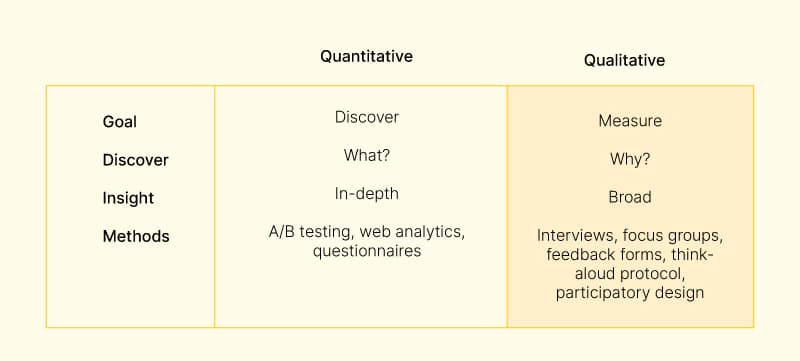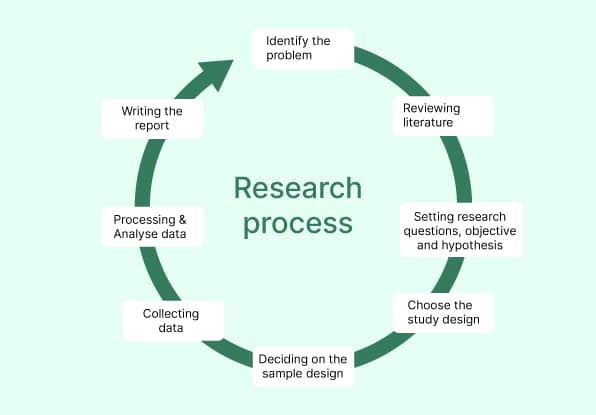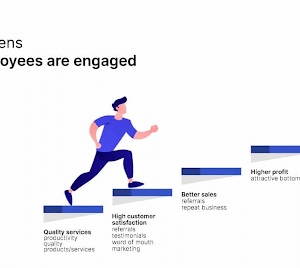
What is Text Analysis?
What is Text Analysis? SHARE THE ARTICLE ON Table of Contents If you run a business that manufactures products or provides services, then you probably

Find the best survey software for you!
(Along with a checklist to compare platforms)
Take a peek at our powerful survey features to design surveys that scale discoveries.
Explore Voxco
Need to map Voxco’s features & offerings? We can help!
Find the best customer experience platform
Uncover customer pain points, analyze feedback and run successful CX programs with the best CX platform for your team.

We’ve been avid users of the Voxco platform now for over 20 years. It gives us the flexibility to routinely enhance our survey toolkit and provides our clients with a more robust dataset and story to tell their clients.
Steve Male
VP Innovation & Strategic Partnerships, The Logit Group
Explore Regional Offices

Find the best survey software for you!
(Along with a checklist to compare platforms)
Take a peek at our powerful survey features to design surveys that scale discoveries.
Explore Voxco
Need to map Voxco’s features & offerings? We can help!
Find the best customer experience platform
Uncover customer pain points, analyze feedback and run successful CX programs with the best CX platform for your team.

We’ve been avid users of the Voxco platform now for over 20 years. It gives us the flexibility to routinely enhance our survey toolkit and provides our clients with a more robust dataset and story to tell their clients.
Steve Male
VP Innovation & Strategic Partnerships, The Logit Group
Explore Regional Offices

Find the best survey software for you!
(Along with a checklist to compare platforms)
Take a peek at our powerful survey features to design surveys that scale discoveries.
Explore Voxco
Need to map Voxco’s features & offerings? We can help!
Find the best customer experience platform
Uncover customer pain points, analyze feedback and run successful CX programs with the best CX platform for your team.

We’ve been avid users of the Voxco platform now for over 20 years. It gives us the flexibility to routinely enhance our survey toolkit and provides our clients with a more robust dataset and story to tell their clients.
Steve Male
VP Innovation & Strategic Partnerships, The Logit Group
Explore Regional Offices

SHARE THE ARTICLE ON
Social research can be defined as the study and analysis of social life surrounding a broad event or an individual’s social life. Researchers conduct social research that can help them modify or verify knowledge in order to bring benefit for society and develop services that are responsive to the needs of society.
Social Research has become an important part of Business and Government. It contributes to expanding the knowledge both the sectors have on the population and that their responses to the needs of people are relevant.
Government and Business require insights and information about the needs of society, Social Research helps obtain these insights. The research educates organizations on a wide range of issues important to society, collected directly from humans, and helps create well-targeted responses.
See Voxco survey software in action with a Free demo.
See Voxco survey software in action with a Free demo.
Social research can be conducted in two ways. That is, you can gather data relevant for the purpose of social research using two methods – Qualitative and Quantitative Research.
Open-text questions and conversation are the elements of Qualitative Social Research. You can gather data from the target population using any of these – Focus groups, Interviews (F2F or telephone), Ethnographic Research, Case studies, etc.
In the case of Qualitative Social Research, the data is collected in the natural environment of the respondent. This helps in promoting trust, thus, produces real and accurate insights.
Close-ended questions are used to gather data directly from the respondents.
The data is gathered using – Surveys, Polls, Interviews, Experimental Research, etc. The aim of the Quantitative method of data collection is to obtain numerical data that can be easily analyzed using statistical programs.
For quantitative research, a sample is selected from the target population to ensure that the data collected is representative of the entire target market.
Social Research intends to gather people’s perceptions, attitudes, social influences, and thought processes to broaden their understanding of people.


Research begins when there is a question that you need to explore and investigate its validity. The research question may range from macro to micro-level phenomena.
Your social research question should seek answers to – Why, What, When, How, etc. For example, let’s say you own a website that delivers groceries. You may want to know why and what motivates your customers to share their addresses with you.
When selecting your question it’s better to look for issues that interest the wider population. This way you can provide services that are properly targeted and provide benefits to society.
After you have decided on the research question you need to study all the published literature on the topic.
Reviewing literature helps you to
The next step is proposing a hypothesis for social research. Keep in mind that not all types of research begin with an established hypothesis. Some research, such as Exploratory studies are aimed at forming a hypothesis, i.e. the research outcome ends with the creation of a hypothesis. On the other hand, some research is aimed to test a hypothesis, these begin with a formulated hypothesis.
A hypothesis is an assumption that explains the theme of the research. It shows the relationship between the variables involved. The researcher develops a hypothesis in order to prove or disprove the validity of the research question.
Designing the research outlines the methods used and the participants in the research. It explains how the research should be conducted.
The research method involves determining
The choice of research method depends on the type of data the researcher wants to gather. If the research wants to gather contextual data that offers in-depth insights, they should opt for the Qualitative research method. In case the researcher wants to draw statistical data, the Quantitative method is the best option.
Sampling involves selecting a segment of respondents from the target population. The selected respondents are referred to as sample size.
It is not practically possible to gather data from the entire target population. Sampling fixes the issue. The researcher selects a sample size that represents the target population, i.e., shares similar characteristics. This helps to generalize the collected data to a bigger audience and develop strategies that respond to the target market.
After deciding the method of data collection you need to start collecting the data. Data collection depends on the nature of research, objective, and resources – finance, time, and effort.
There are two sources of data collection Primary and Secondary. The primary source of data is experiments, observation, or surveys. The secondary source includes journals, reports, established studies, etc.
For Surveys data can be collected via Questionnaires or Interviews. You can conduct surveys, using Websites, Social Media, SMS, and Telephone interviews, Personal or Web-based interviews.
Depending on the nature of social research, Experimental Research can also be used to gather relevant data. Experimental research aims at establishing a cause-effect relationship between the independent and dependent variables of the research. This research helps observe whether manipulating the independent variable has any effect on the dependent variable.
The next step is to analyze the data collected at the end of the research. Analyzing the data depends on the nature of collected data.
Qualitative data involves textual insights which are subjective in nature.
Quantitative data consists of numerical data which is analyzed using Descriptive and Inferential analysis.
The descriptive analysis involves Univariate, Bivariate, and Multivariate. Univariate is the analysis of one variable, while Bivariate and Multivariate involve analysis of two and more than two variables respectively.
The inferential analysis involves Comparison and Regression tests. Comparison tests are used to compare the post-test result and control group subjects using Posttest Only Control Group Design. A regression test helps understand if changing the predictor variable will cause any change in the outcome variable.
Your report should contain a detailed description of all the aspects of the research. Your report should explain – Purpose of the research, Research Question, Hypothesis, Methods used to gather data and data analysis.
Make sure that the report illuminates the findings in a way that is easy for the readers or fellow researchers to understand. Make use of charts, tables, or graphs to make the report interesting that it preoccupies the readers.
Explore all the survey question types possible on Voxco
Explore all the survey question types possible on Voxco
Voxco offers an easy-to-use interface, Survey Analytics Software, and Omnichannel Survey to make it easy and stress-free for organizations to conduct Social Research. You can make good use of Voxco to conduct Online surveys, Field Surveys, IVR surveys, and CATI surveys all from one single platform.
Here’s how you can conduct Social Research with Voxco’s Survey Platform:
See question types, survey design tools. Try a sample survey.
Report your findings: You can turn your crosstabs into visual charts with a simple click using Voxco Survey Analytics software.
Read more

What is Text Analysis? SHARE THE ARTICLE ON Table of Contents If you run a business that manufactures products or provides services, then you probably

Agile Market Research SHARE THE ARTICLE ON Share on facebook Share on twitter Share on linkedin Voxco is trusted by 450+ Global Brands in 40+

10 Best Employee Satisfaction Survey Questions and Why You Must Ask Them SHARE THE ARTICLE ON Table of Contents Employees who are pleased with their

The ebbs and flows in business can often cause a fluctuation in the demand for research. This applies to many different industries, in both public

Unlocking the Power of Simple Random Sampling: Methods, Examples, and Advantages The Ultimate Guide to Random Sampling Get a step-by-step guide for choosing the correct

How to leverage business intelligence to detect and prevent fraud SHARE THE ARTICLE ON Table of Contents Introduction Fraud is a significant risk for businesses
We use cookies in our website to give you the best browsing experience and to tailor advertising. By continuing to use our website, you give us consent to the use of cookies. Read More
| Name | Domain | Purpose | Expiry | Type |
|---|---|---|---|---|
| hubspotutk | www.voxco.com | HubSpot functional cookie. | 1 year | HTTP |
| lhc_dir_locale | amplifyreach.com | --- | 52 years | --- |
| lhc_dirclass | amplifyreach.com | --- | 52 years | --- |
| Name | Domain | Purpose | Expiry | Type |
|---|---|---|---|---|
| _fbp | www.voxco.com | Facebook Pixel advertising first-party cookie | 3 months | HTTP |
| __hstc | www.voxco.com | Hubspot marketing platform cookie. | 1 year | HTTP |
| __hssrc | www.voxco.com | Hubspot marketing platform cookie. | 52 years | HTTP |
| __hssc | www.voxco.com | Hubspot marketing platform cookie. | Session | HTTP |
| Name | Domain | Purpose | Expiry | Type |
|---|---|---|---|---|
| _gid | www.voxco.com | Google Universal Analytics short-time unique user tracking identifier. | 1 days | HTTP |
| MUID | bing.com | Microsoft User Identifier tracking cookie used by Bing Ads. | 1 year | HTTP |
| MR | bat.bing.com | Microsoft User Identifier tracking cookie used by Bing Ads. | 7 days | HTTP |
| IDE | doubleclick.net | Google advertising cookie used for user tracking and ad targeting purposes. | 2 years | HTTP |
| _vwo_uuid_v2 | www.voxco.com | Generic Visual Website Optimizer (VWO) user tracking cookie. | 1 year | HTTP |
| _vis_opt_s | www.voxco.com | Generic Visual Website Optimizer (VWO) user tracking cookie that detects if the user is new or returning to a particular campaign. | 3 months | HTTP |
| _vis_opt_test_cookie | www.voxco.com | A session (temporary) cookie used by Generic Visual Website Optimizer (VWO) to detect if the cookies are enabled on the browser of the user or not. | 52 years | HTTP |
| _ga | www.voxco.com | Google Universal Analytics long-time unique user tracking identifier. | 2 years | HTTP |
| _uetsid | www.voxco.com | Microsoft Bing Ads Universal Event Tracking (UET) tracking cookie. | 1 days | HTTP |
| vuid | vimeo.com | Vimeo tracking cookie | 2 years | HTTP |
| Name | Domain | Purpose | Expiry | Type |
|---|---|---|---|---|
| __cf_bm | hubspot.com | Generic CloudFlare functional cookie. | Session | HTTP |
| Name | Domain | Purpose | Expiry | Type |
|---|---|---|---|---|
| _gcl_au | www.voxco.com | --- | 3 months | --- |
| _gat_gtag_UA_3262734_1 | www.voxco.com | --- | Session | --- |
| _clck | www.voxco.com | --- | 1 year | --- |
| _ga_HNFQQ528PZ | www.voxco.com | --- | 2 years | --- |
| _clsk | www.voxco.com | --- | 1 days | --- |
| visitor_id18452 | pardot.com | --- | 10 years | --- |
| visitor_id18452-hash | pardot.com | --- | 10 years | --- |
| lpv18452 | pi.pardot.com | --- | Session | --- |
| lhc_per | www.voxco.com | --- | 6 months | --- |
| _uetvid | www.voxco.com | --- | 1 year | --- |